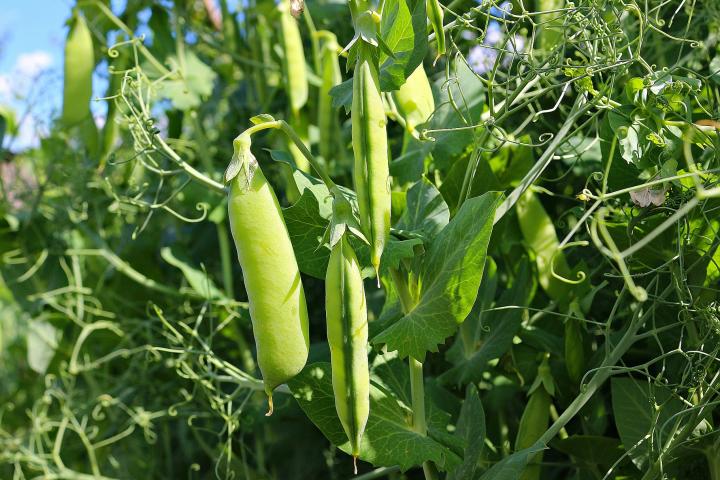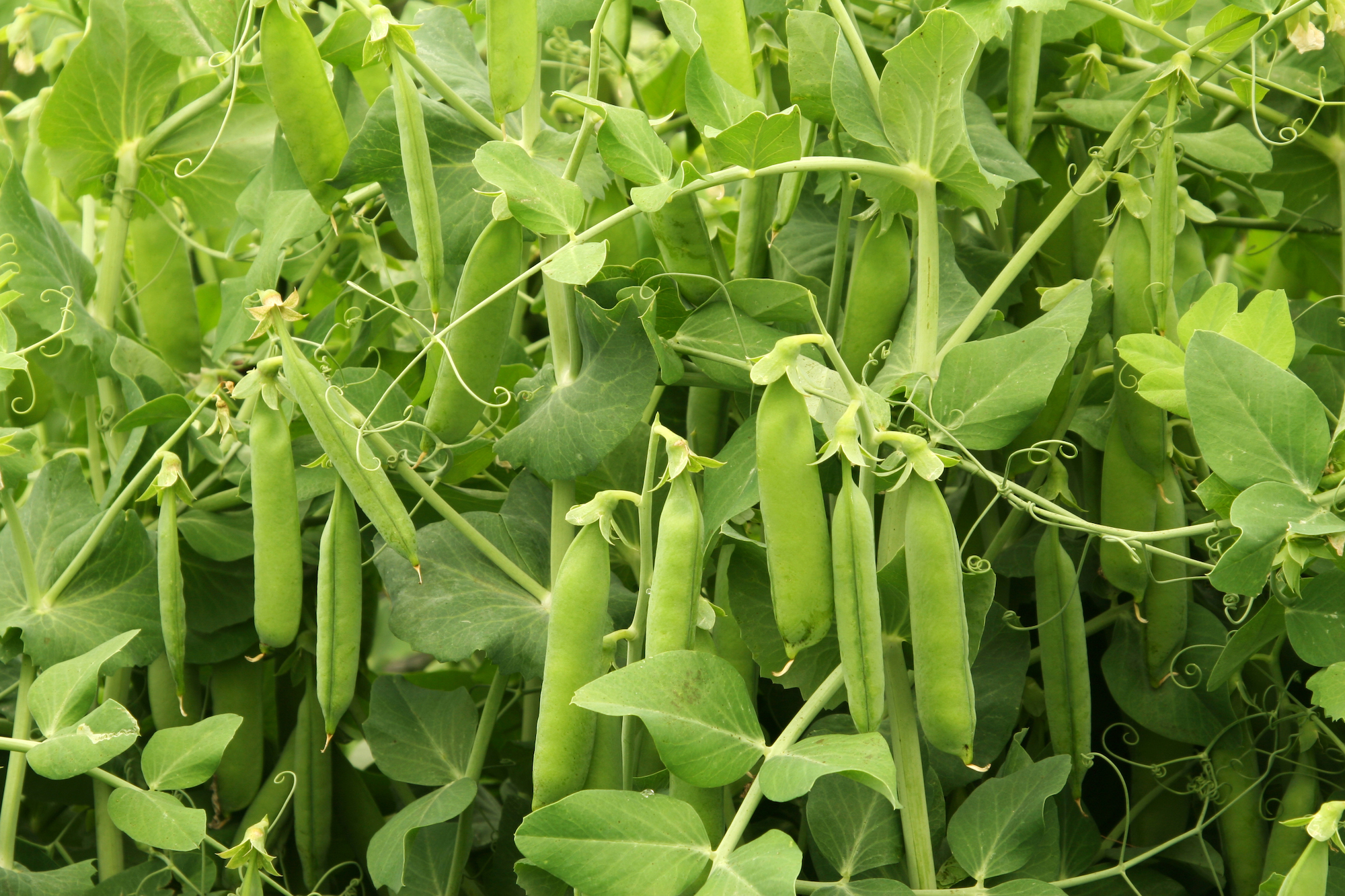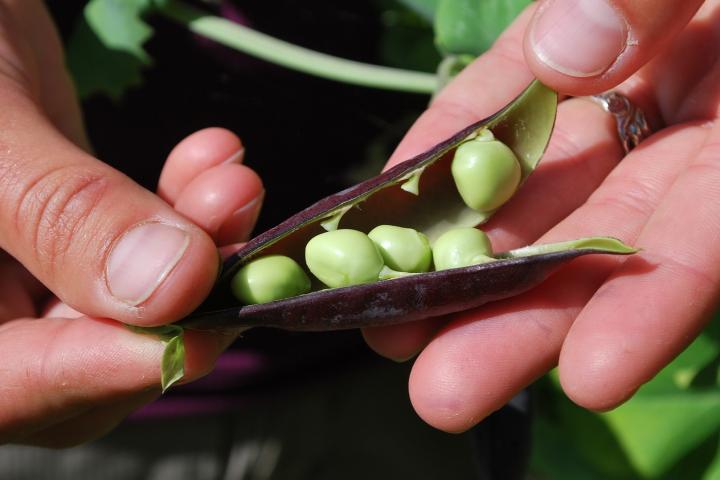
Plant sweet, crisp peas in the spring or fall for a tasty garden treat!
Read Next
Types
Shelling Peas: Also known as garden or sweet peas, these are the most common types of peas available. Some good varieties to try include:
- ‘Green Arrow’: 2- to 3-foot vines; no support required; high yields; tolerant of mildew and Fusarium wilt
- ‘Lincoln’: 2- to 3-foot vines; no support required; tolerant of mildew and Fusarium wilt
- The classic ‘Wando’: suitable for freezing
- ‘Thomas Laxton’: high sugar content
- ‘Progress No. 9’: good disease resistance
- ‘Little Marvel’: grows only 15 inches tall
Snap Peas: You eat the entire tender pod of snap peas. Some good varieties to try are:
- ‘Sugar Ann’: vines grow only 2 feet tall, no support required.
- ‘Sugar Snap’: the original (Calvin’s), just brought back; carried only by Johnny’s Selected Seeds
- ‘Early Snap’: an early-maturing version produces peas 10 to 14 days earlier than ‘Sugar Snap’
- ‘Super Sugar Mel’: produces 4-inch-long, very sweet pods
Snow Peas: Common in Chinese cooking, these flat-podded peas have edible pods. Some good varieties to try include:
- ‘Mammoth Melting Sugar’: 4- to 5-foot vines; stringless pods; wilt tolerant
- ‘Oregon Sugar Pod II’: grows only 2-1/2 feet tall
- ‘Snowbird’: resistant to fusarium wilt
Gardening Products
Cooking Notes
Ideally, peas should be used when freshly picked as they rapidly toughen and will lose their sweetness.
Green peas can be eaten raw as a snack or in salads. Peas are also excellent in pasta, soups, casseroles, stir-fries, and sautés. Cooking times vary greatly depending on when the green peas were harvested. Young, small ones require less cooking than older, starchy ones.
To steam, put 1 inch of water in a pot, bring to a boil, place a steaming basket in the pan, slowly add peas to the steaming basket, and cover with a lid. Steam for about 2 minutes. Or, to microwave, put 2 tablespoons of water in a microwavable dish and cover. Microwave on high, checking every 2 minutes for doneness. Add butter and salt as desired.
Interestingly, the pea tendrils are also edible! Harvest these young pea shoots when they are 12 to 18 inches out of the ground. As with peas, eat the tender shoots soon after harvesting. Add to salads or into stir-fries at the end of cooking.
- « Previous
- 1
- 2
- …
- 10
- Next »













Comments